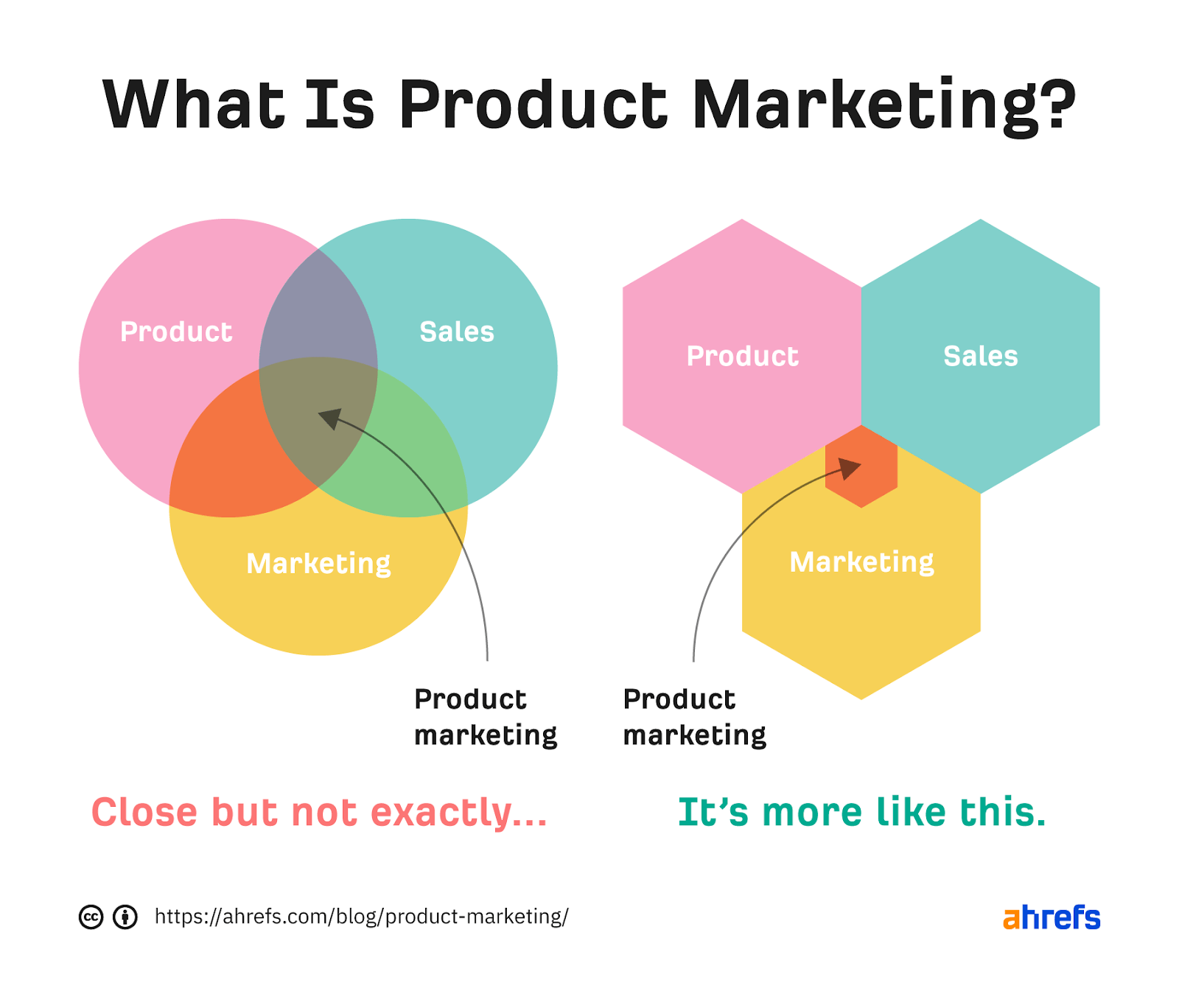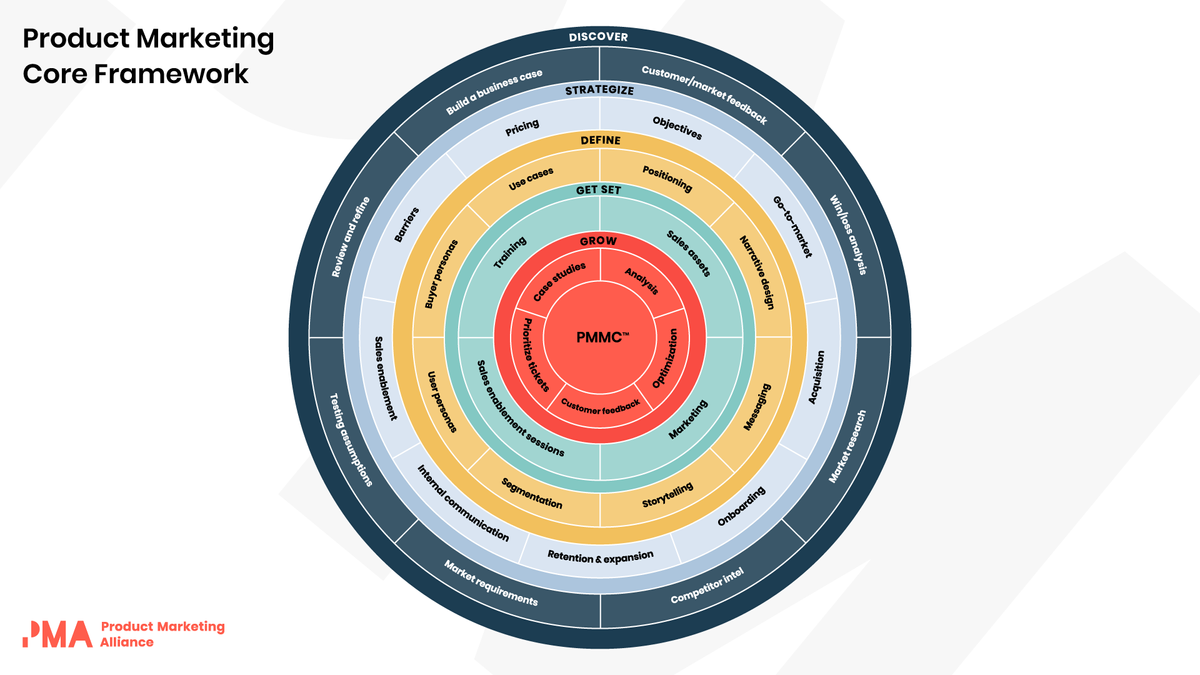Lately, I've been having some serious doubts about the way most SaaS companies approach product marketing, especially in the early stages. You know, the way they tend to treat it as an afterthought, or just lump it in with demand gen and call it a day?
But here's the thing: after working with dozens of startups, I've seen firsthand how a strong product marketing function can be an absolute turning point. It's not just about whipping up some snazzy datasheets or tweaking your website copy—it's about deeply understanding your market, your customers, and what sets you apart, and then using those insights to drive serious growth.
So if you're a founder or marketer who's been sleeping on the strategic power of product marketing, or if you're just not sure how to make it work for your startup, this post is for you. I'm going to share some of the battle-tested strategies and frameworks my team and I have used to help our clients build product marketing into a secret weapon for growth. Get ready for some real talk, some tough love, and a whole lot of actionable insights you can start using today.

Why Product Marketing Matters More Than Ever
In today's crowded SaaS landscape, simply having a great product is no longer enough. To stand out and win, you need to articulate a compelling value proposition, target the right customers, and deliver a seamless end-to-end experience. That's where product marketing comes in.
At its core, product marketing is about aligning your product strategy with your go-to-market strategy. It's the connective tissue that ensures every aspect of your business—from development to sales to customer success—is working in lockstep to deliver maximum value to your target customers.
| Maturity Level | Characteristics | Outcomes |
|---|---|---|
| Level 1: Ad Hoc | No dedicated product marketing resources; activities happen sporadically across multiple teams | Inconsistent messaging, unclear value prop, missed opportunities for growth |
| Level 2: Emerging | Some product marketing activities, but no clear strategy or ownership; reactive rather than proactive | Improved messaging but still lack of alignment; some quick wins but no sustainable process |
| Level 3: Aligned | Dedicated product marketing team; clear strategy and goals aligned with business objectives; proactive and data-driven | Consistent messaging across all customer touchpoints; improved sales effectiveness and efficiency |
| Level 4: Strategic | Product marketing is a strategic driver of growth; deep customer insights inform product and GTM decisions; tight alignment with all functions | Strong competitive differentiation; rapid growth and market leadership; high customer satisfaction and advocacy |
When done right, product marketing can help you:
- Deeply understand your target market and buyer personas
- Craft a differentiated positioning and messaging strategy
- Equip your sales team to close more deals faster
- Improve product adoption and customer success
- Gather actionable insights to inform your product roadmap
But despite its strategic importance, product marketing is often an afterthought in younger organizations. Founders may see it as a luxury to be added later, or lump it in with demand gen and other marketing functions. That's a missed opportunity.

Making the Case for Early Investment
One of our clients, a Series A SaaS startup, initially struggled to gain traction in a highly competitive market. Their product was solid, but their positioning was vague and their sales cycles were long. They knew they needed to do something different, but weren't sure where to start.
We encouraged them to invest early in building a dedicated product marketing function. At first, the founders were hesitant—they were already stretched thin and weren't convinced they needed a specialist. But we made the case that product marketing wasn't a nice-to-have, it was a need-to-have.
We helped them recruit a seasoned product marketer and worked closely with them to develop a comprehensive strategy. The results were striking:
| Metric | Before | After |
|---|---|---|
| Win rate | 25% | 40% |
| Sales cycle | 6 months | 3 months |
| Product adoption rate | 30% | 70% |
By investing in product marketing early, this startup was able to sharpen their positioning, equip their sales team, and accelerate their growth. They went from struggling to stand out to becoming a category leader.

A Framework for Product Marketing Success
| Alignment Area | Key Stakeholders | Product Marketing's Role |
|---|---|---|
| Market Insights | - Product Management - Executive Leadership |
- Conduct market research and competitive analysis - Synthesize insights to inform product strategy and positioning |
| Go-to-Market Strategy | - Sales - Marketing - Customer Success |
- Define target segments and buyer personas - Develop messaging and content for each stage of the customer journey - Enable sales with tools and training |
| Product Launch | - Product Management - Engineering - Marketing - Sales |
- Craft launch messaging and positioning - Develop sales enablement and training materials - Coordinate cross-functional launch activities |
| Customer Feedback Loop | - Customer Success - Product Management |
- Gather and analyze customer feedback and usage data - Share insights to inform product roadmap and marketing strategies |
So what does it take to build a high-impact product marketing function? Based on our experience, there are four key pillars:
- Market intelligence: Deeply understand your market, competitors, and buyers. Conduct research, analyze data, and gather insights to inform every aspect of your strategy.
- Positioning and messaging: Craft a unique and compelling value proposition. Develop clear, consistent messaging that resonates with your target buyers and differentiates you from the competition.
- Sales enablement: Equip your sales team with the tools, content, and training they need to effectively communicate your value prop and close deals. Develop battle cards, case studies, demos, and other assets.
- Go-to-market strategy: Define your target segments, buyer personas, and customer journey. Develop a comprehensive plan for reaching and converting your ideal customers.
To bring this framework to life, consider another client story. This mid-stage SaaS company had a strong product but was struggling to crack the enterprise market. Their messaging was too technical and didn't resonate with business buyers.
We worked with their product marketing team to implement the four pillars:
- They conducted extensive research to understand the needs, goals, and pain points of enterprise buyers.
- Based on those insights, they crafted a new positioning around “Accelerating Digital Transformation.” This put their product in a strategic business context.
- They built a library of powerful customer proof points and ROI calculators to help the sales team quantify their value.
- Finally, they developed a segmented ABM strategy to reach key decision-makers at target accounts.
The shift was dramatic. Armed with more relevant messaging and tools, the sales team started closing six-figure deals with Global 2000 companies. Product marketing had opened up a whole new growth engine.
Making It Happen
Building a product marketing function from the ground up can feel daunting, especially when you're a lean team with constrained resources. But the payoff is undeniable. The key is to start small, stay focused, and iterate rapidly.
| Funnel Stage | Key Metrics |
|---|---|
| Awareness | - Website traffic and engagement - Social media reach and engagement - PR and earned media placements |
| Consideration | - Content downloads and shares - Webinar and event registrations - Product demo requests |
| Decision | - Opportunity win rate - Average sales cycle length - Competitive win rate |
| Adoption | - Product adoption rate - Feature usage and engagement - Customer support ticket volume |
| Advocacy | - Net Promoter Score (NPS) - Customer referrals and references - Case study and testimonial participation |
Here are some practical tips for getting started:
Hire the right leader
Look for a seasoned product marketer who can think strategically but also roll up their sleeves. Ideal candidates will have experience in your industry and a track record of cross-functional collaboration.
Focus on quick wins
Identify a few key initiatives that can generate tangible results in a short timeframe. This will help you build momentum and secure buy-in for larger investments.
Foster tight alignment
Product marketing works best when it's not siloed. Establish regular syncs with product, sales, marketing, and customer success to ensure a free flow of insights and ideas.
Measure what matters
Define clear KPIs for your product marketing efforts, such as win rates, feature adoption, and customer satisfaction. Use data to continually optimize your approach.
Above all, remember that product marketing is a strategic investment, not a tactical expense. By establishing this critical function early, you're laying the foundation for sustainable growth and competitive advantage.
As your resident SaaS marketing experts, we've seen the transformative power of product marketing time and again. If you're ready to take your B2B SaaS company to the next level, we'd love to chat. Reach out anytime for a free consultation. Together, let's make product marketing your secret weapon for success.
FAQ
1. What exactly is product marketing, and how does it differ from other marketing functions?
Product marketing is the strategic process of bringing a product to market, promoting it, and driving its growth. It sits at the intersection of product, marketing, and sales, focusing on understanding customer needs, crafting positioning and messaging, enabling sales, and driving adoption.
2. Why is product marketing particularly important for early-stage B2B SaaS companies?
Early-stage B2B SaaS companies often face intense competition and need to quickly establish a strong market position. Product marketing helps them differentiate their offering, target the right customers, and scale their go-to-market efforts efficiently.
3. What are some signs that a startup needs to invest in product marketing?
Common indicators include unclear or inconsistent messaging, long sales cycles, low product adoption rates, high customer churn, and difficulty standing out in a crowded market.
4. How can product marketing help a startup define its target audience and value proposition?
Product marketers conduct extensive market research, analyze competitor offerings, and gather customer insights to develop a deep understanding of target buyers and their needs. They use this knowledge to craft a compelling value proposition and positioning strategy.
5. What role does product marketing play in the sales process?
Product marketing supports sales by developing targeted content, tools, and training that help reps effectively communicate the product's value and navigate the buyer's journey. This includes sales decks, demo scripts, battle cards, and case studies.
6. How does product marketing contribute to product strategy and roadmap decisions?
By gathering and analyzing market and customer feedback, product marketers provide valuable insights that inform product development priorities. They help ensure that the product roadmap aligns with market demand and competitive trends.
7. What metrics should be used to measure the success of product marketing efforts?
Key metrics include competitive win rates, sales cycle length, product adoption rates, feature usage, customer satisfaction scores, and advocacy metrics like referrals and case study participation.
8. How can startups with limited resources get started with product marketing?
Start by designating a dedicated product marketing owner, even if it's a shared role. Focus on a few high-impact initiatives, such as refining messaging, creating a sales deck, or launching a customer advisory board. Leverage external resources and templates where possible.
9. What skills and qualities should startups look for in a product marketing hire?
Look for candidates with prior experience in your market, strong research and communication skills, and the ability to think strategically and collaborate cross-functionally. They should be data-driven, customer-focused, and able to thrive in a fast-paced startup environment.
10. How can startups ensure strong alignment between product marketing and other functions?
Foster a culture of transparency and collaboration by establishing regular cross-functional meetings, sharing customer insights broadly, and involving product marketing in key decisions related to product, sales, and go-to-market strategy. Clearly define roles and responsibilities to avoid duplication of efforts.






